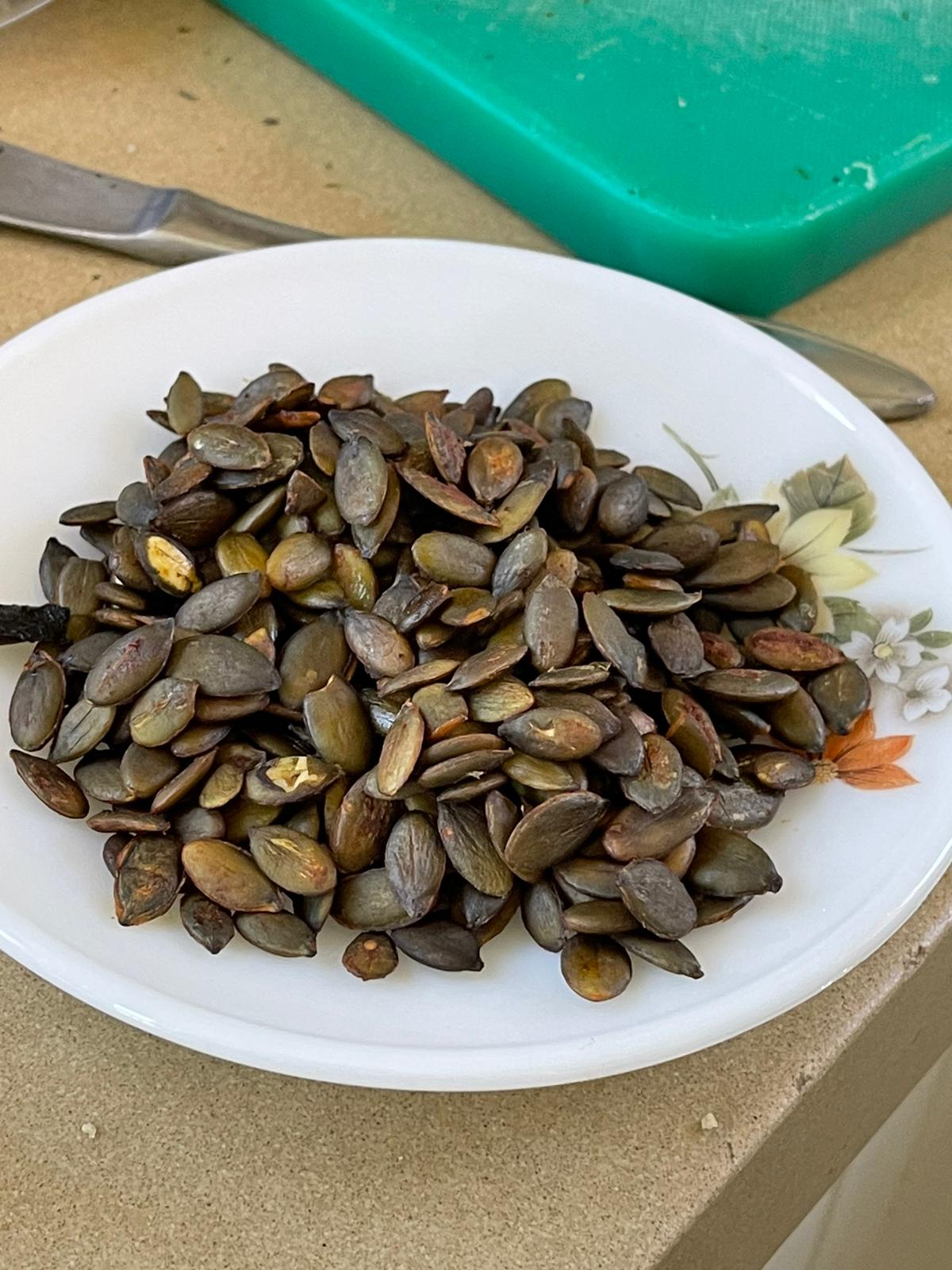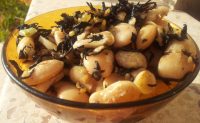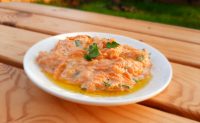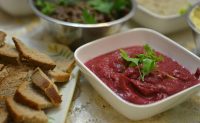Soy sauce roasted pumpkin seeds snack
By Eyal Shpringer

At the age of 26, I came to China for the first time to study Chinese medicine in Chengdu, Sichuan Province, the land of the Four Rivers. During one of the school vacations, my partner Yifat and I went on a horseback riding tour to Songpan Province, northwest of Chengdu, on the border with the Tibetan Plateau. Songpan is a topographically high mountainous area famous for its streams and clear springs that run through the mountains. Yes, it was a time when we didn’t yet know the burden of the responsibility of raising children and operating a career, so we were mobile and open to adventure.
At that time, even though I did not practice nutritional therapy, I was already curious about food and its preparation. Therefore I remember the foods that the tour guides offered us: every meal during the riding days was simply prepared and usually included just one food item with a minimal level of seasoning. For example, we experienced meals based solely on simple, coarse bread prepared on the spot and baked in an iron pot placed on a bonfire. What a change compared to the rich and spicy food stalls of Sichuan Province!
The pumpkin meal
The most indulgent meal I remember from the trip was a pumpkin meal. This meal was etched into my memory because it contained two dishes (!) that were based on the same raw material.
The main course – the pumpkin, cleaned from the seeds, cut into cubes, and baked in the pot-oven with a bit of salt. Perhaps it was the mountain air, the proximity to the gods or the gnawing hunger, the combination of the sweetness of the pumpkin, the salt and the charred edges that made this simple dish a delicacy.
After the pumpkin meal came a surprise we were not prepared for: we were served soy roasted and pumpkin seeds.
Recipe of soy-roasted pumpkin seeds
Ingredients:
Peeled pumpkin seeds or seeds in their shell extracted from a fresh pumpkin just before cooking
Good quality soy sauce. About a tablespoon of sauce per cup of seeds
Some water to dilute the soy sauce
Preparation of the roasted seeds
Mix the soy sauce with twice the amount of water in a small bowl.
Heat a small skillet and roast the pumpkin seeds until some of them begin to swell or become light brown.
At this point, tilt the skillet so the pumpkin seeds accumulate on one of its sides, and quickly add the diluted soy sauce.
Place the pan on the stove, and continue to roast and mix until the seeds are dry. Store the seeds in a closed jar. The seeds can be used as a snack, added to dips, or sprinkled over vegetable or grain stews.
Additional options:
- Use other kinds of seeds, especially sunflower seeds and flaxseed
- Replace the soy sauce with salt water or pickled vegetables brine
- Add seasonings such as turmeric or chili powder to the soy sauce
- In macrobiotics, it is common to roast and mix pumpkin seeds, flaxseeds, sesame, and sunflower seeds and sprinkle them over food, sometimes as a substitute for oil. The effect is more Yang-concentrated and dry. It should be borne in mind that while liquid oil contains primarily fat, seeds are a richer nutritional source that also contains minerals, fiber, protein and carbohydrates.
Thoughts about roasted pumpkin seeds
Just as autumn is born out of the end of summer, the seeds are conceived within the pumpkin. These seeds present a concentrated essence suitable for supporting our bodies in the process of transition from the end of summer to autumn and winter.
The seeds’ taste is sweet and bitter similar to the taste of the pumpkin, but their quality is more fatty and nutritious. The oily seeds help to balance the relatively dry climate of autumn. This oiliness may also provide us with concentrated energy for colder days. Pumpkin seeds are rich in minerals and especially iron and zinc – minerals of Yang quality that are of great importance for activating many enzymes, accelerating metabolic processes, and supporting the functioning of the brain, pancreas, hormonal system and genitals.
The summer season is a season of celebrations, a season of seduction with textures and colors, in which juicy vegetables of the gourd family, such as cucumber, zucchini, pumpkin, watermelon and melon are eaten. After all these succulents have been eaten, we are left with the seeds, small, concentrated and dark in color.
Now begins the actual game of nourishing life deeply. While many of us simply throw the seeds away, extracting them from the fruit and processing them requires intentional effort, acknowledging their nutritional value even if their quantity is small.
The pumpkin seeds as a metaphor for a stage in my life
When I went out to Sōngpān with the woman I love, it was already the end of summer. In hindsight, that end of summer was not only a season but also the beginning of a transitional period in my life. Perhaps the pumpkin seeds roasted in the campfire attracted me so much because I felt they marked the end of my youth and the beginning of a period requiring more commitment and concentration. I felt how the summer of my life was about to be replaced with a time dedicated to deeper nourishment and the meaningful creation of a new life, a period that requires patience, perseverance and recognition of the value of the concentrated resources and treasures life offers me.
As a therapist, I offer pumpkin seeds to patients who need such concentrated nourishment. Pumpkin seeds help to eradicate parasites, improve bowel movement and thereby shed everything old. They provide deep nourishment and anchorage for the beginning of a new life cycle by supporting the blood, the sex organs and the hormonal system, hair, nails and various body systems.
Eyal Shpringer, A Chinese medicine practitioner and a clinical herbalist specializing in Chinese nutrition and traditional nutritional approaches. Eyal holds a master’s degree in research of East Asian medicines. Since 2007 he is teaching a post graduates training program in the field of Chinese and oriental nutrition according to the TEF method as well as other courses and workshops for practitioners. Eyal co-authored the bestselling book Cooking for Life: A Traditional Nutrition Cookbook for Cancer Patients (Hebrew).
Did you find the recipe interesting? Do you want to continue studying with me?
You are invited to join me on my Instagram page and in the Facebook group: Traditional nutrition and Medicine.
Eyal Shpringer is the founder of the TEF website. He is a therapist, a lecturer, and a researcher of traditional treatment approaches


